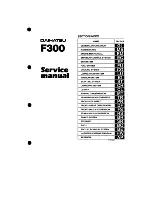
×
−
Subtract the combined weight of
the driver and passengers from
1,158 lbs (525 kg).
The resulting figure equals the
available amount of cargo and
luggage load capacity.
For example, if there will be five
150 lbs (70 kg) occupants in your
vehicle, the amount of available
cargo and luggage load capacity is
408 lbs (175 kg).
5
150 lbs (70 kg) = 750 lbs
(350 kg)
1,158 lbs (525 kg)
750 lbs (350 kg)
= 408 lbs (175 kg)
Determine the combined weight
of accessories, luggage, and cargo
being loaded in the vehicle. The
weight may not safely exceed the
available cargo and luggage load
capacity calculated in step 4
[408 lbs (175 kg) in this example].
Determine the combined weight
of the driver and passengers that
will be riding in your vehicle.
Locate the statement, ‘‘the
combined weight of occupants and
cargo should never exceed 1,158
lbs (525 kg)’’ on your vehicle’s
placard (on the driver’s doorjamb).
To determine the correct cargo and
luggage load limit:
The maximum load for your vehicle
is 1,158 lbs (525 kg). This figure
includes the total weight of all
occupants, cargo, and accessories,
and the tongue load if you are towing
a trailer.
If your vehicle will be towing a
trailer, the load from your trailer
will be transferred to your vehicle.
Consult this manual to determine
how this reduces the available
cargo and luggage load capacity of
your vehicle.
1.
2.
3.
4.
5.
6.
Carrying Cargo
Load Limits
194
Overloading or improper
loading can affect handling and
stability and cause a crash in
which you can be hurt or killed.
Follow all load limits and other
loading guidelines in this
manual.
















































